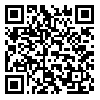Volume 16, Issue 1 (Spring 2014)
Advances in Cognitive Sciences 2014, 16(1): 29-38 |
Back to browse issues page
1- Linguistics PhD in Ferdowsi University of Mashad, Mashhad,Iran.
2- Associate Professor of Linguistics, Ferdowsi University of Mashad,Mashhad,Iran.
3- Professor of Linguistics, Ferdowsi University of Mashad, Mashhad,Iran.
2- Associate Professor of Linguistics, Ferdowsi University of Mashad,Mashhad,Iran.
3- Professor of Linguistics, Ferdowsi University of Mashad, Mashhad,Iran.
Abstract: (2872 Views)
Introduction: This article examined the discourse goals of people in producing eight different types of figurative language and assessed whether these goals vary in different types.
Method: Enrolled subjects were 130 associate degree students (65 men and 65 women). An author-composed questionnaire was administered to subjects in which they were asked to read the writers examples first and then to state some examples for that type of figurative language. Later, they were asked to state their intention of using the special type of figurative language instead of literal counterparts.
Results: According to Roberts and Kreuz, about 20 discourse goals were devised. results indicated that the most frequent goals for indirect request are: To show positive emotion, showing a clear-sighted characteristics, To be polite. The most frequent goals for Understatement: others, To guide another's actions, To protect the self. The most frequent goals for idiom: To clarify, To be conventional. The most frequent goals for simile: To clarify, To emphasize, To be eloquent. The most frequent goals for Rhetorical question: To emphasize. The most frequent goals for Hyperbole: To emphasize, To clarify. The most frequent goals for irony: To show negative emotion, To be humorous. The most frequent goals for metaphor: others, To guide another's actions, To show negative emotion, To be humorous.
Conclusion: This can be concluded that there are similarities and differences in stating figurative language discourse goals which are stated in this report.
Method: Enrolled subjects were 130 associate degree students (65 men and 65 women). An author-composed questionnaire was administered to subjects in which they were asked to read the writers examples first and then to state some examples for that type of figurative language. Later, they were asked to state their intention of using the special type of figurative language instead of literal counterparts.
Results: According to Roberts and Kreuz, about 20 discourse goals were devised. results indicated that the most frequent goals for indirect request are: To show positive emotion, showing a clear-sighted characteristics, To be polite. The most frequent goals for Understatement: others, To guide another's actions, To protect the self. The most frequent goals for idiom: To clarify, To be conventional. The most frequent goals for simile: To clarify, To emphasize, To be eloquent. The most frequent goals for Rhetorical question: To emphasize. The most frequent goals for Hyperbole: To emphasize, To clarify. The most frequent goals for irony: To show negative emotion, To be humorous. The most frequent goals for metaphor: others, To guide another's actions, To show negative emotion, To be humorous.
Conclusion: This can be concluded that there are similarities and differences in stating figurative language discourse goals which are stated in this report.
Type of Study: Research |
Subject:
Special
Received: 2013/09/16 | Accepted: 2013/10/25 | Published: 2014/04/14
Received: 2013/09/16 | Accepted: 2013/10/25 | Published: 2014/04/14
| Rights and permissions | |
 |
This work is licensed under a Creative Commons Attribution-NonCommercial 4.0 International License. |


